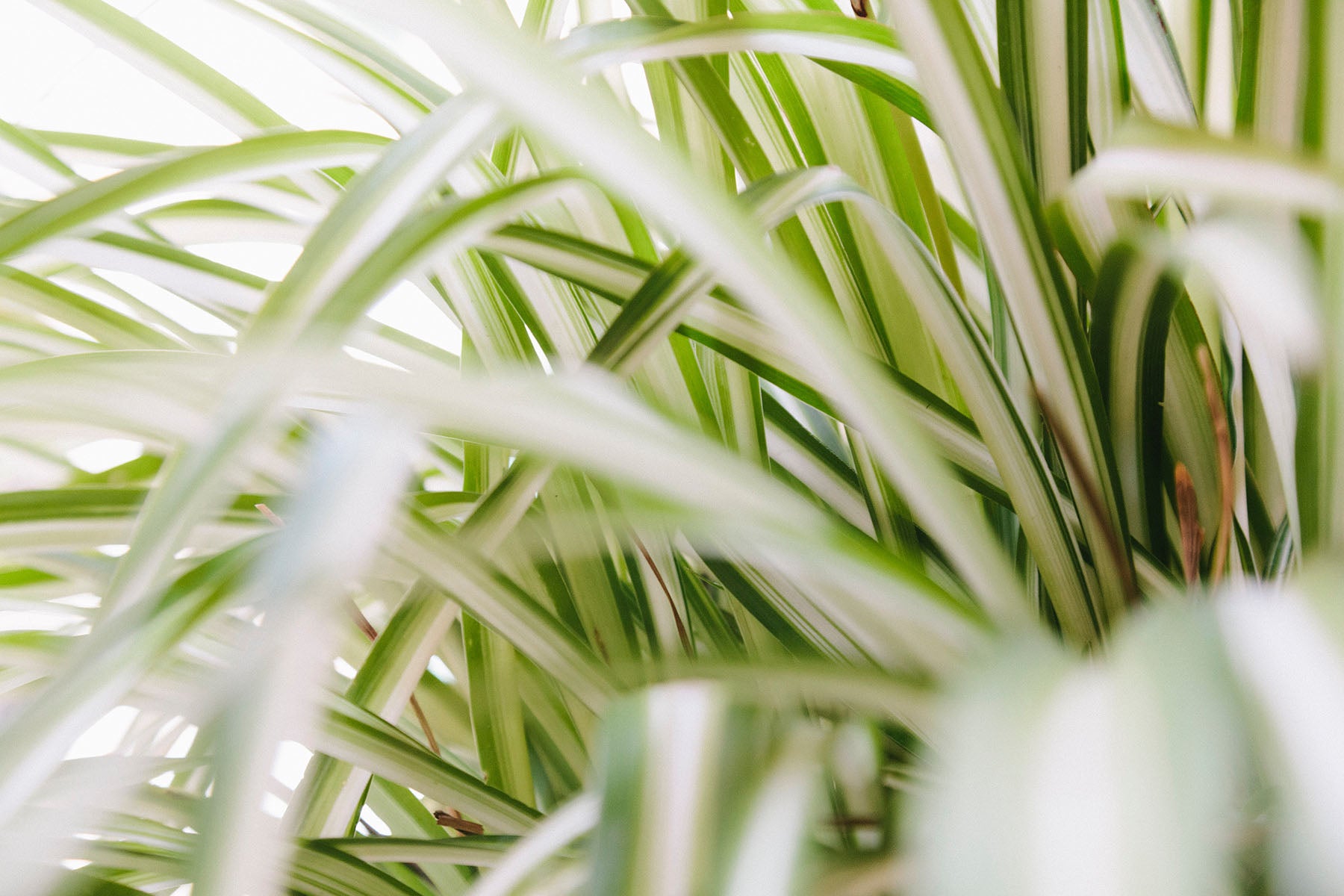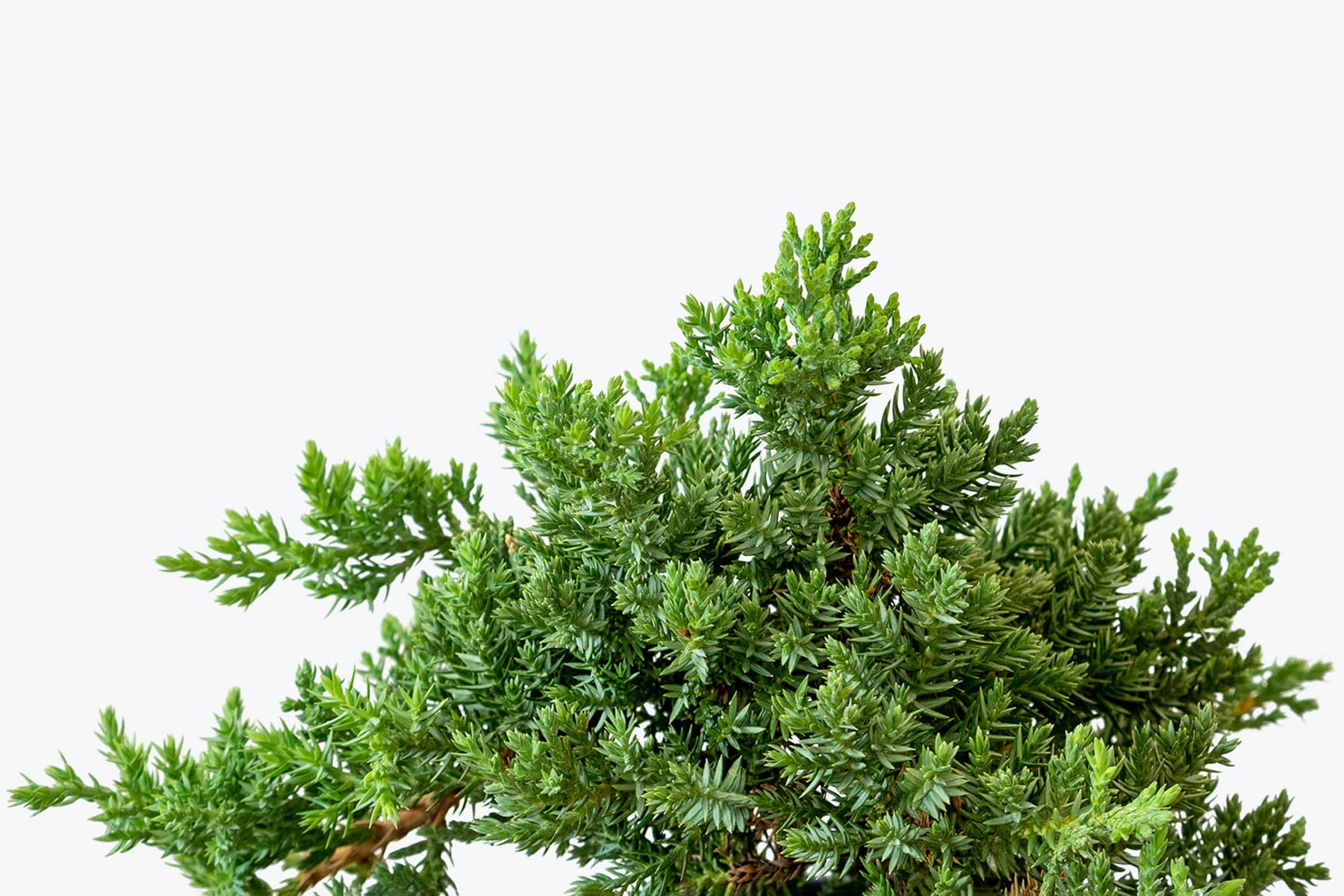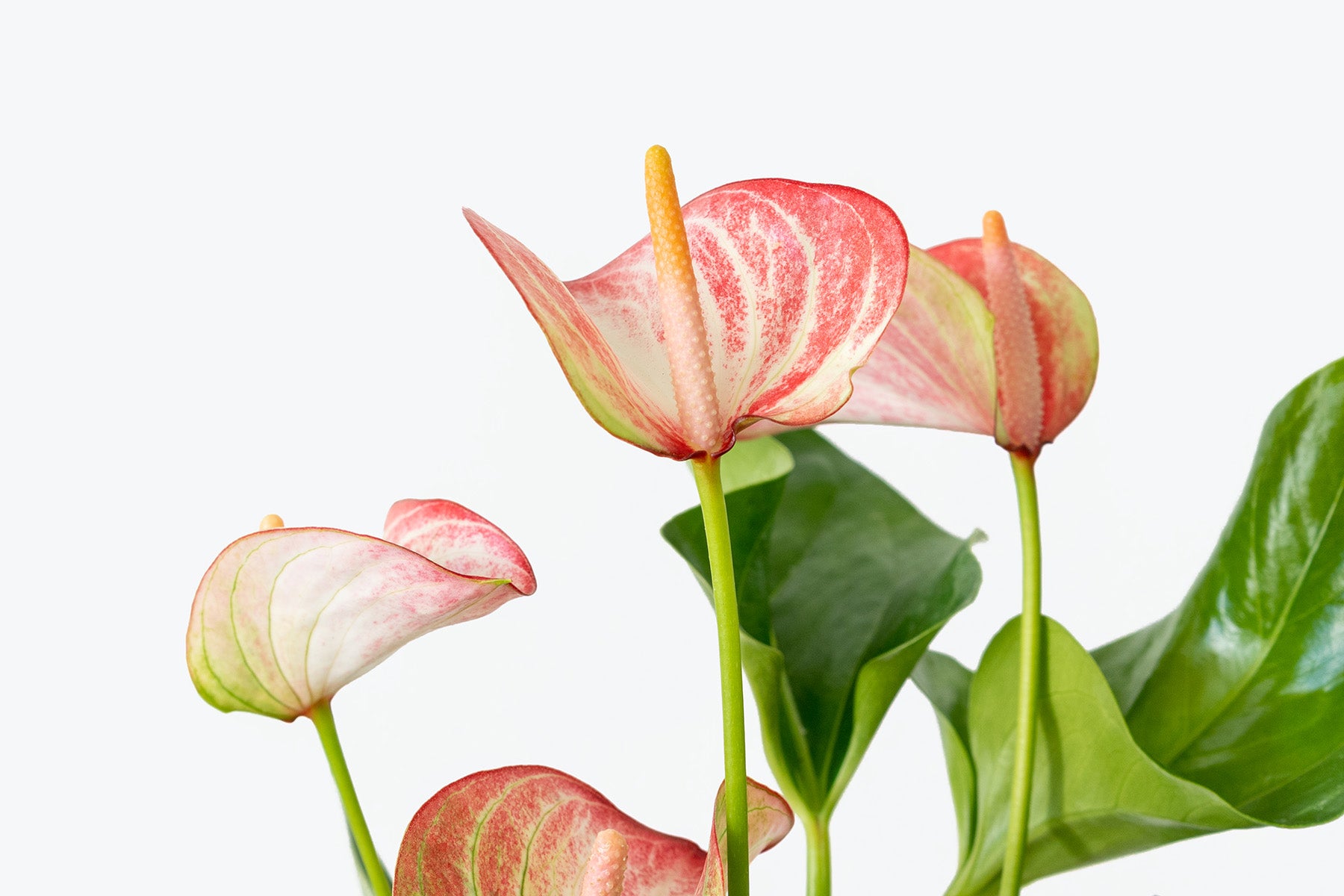
How to Take Care of Your Spider Plant
Unlike the creepy crawlers that we think of when we hear the word "spider", Spider Plants, also known as Chlorophytum comosum or Airplane Plants, are beautiful houseplants that adapt to most conditions. They are one of those plants that your grandmother probably had hanging in her home in a macrame hanger many years ago. This image speaks to their timelessness, as well as to how low maintenance they can be, living happily for years and years. Not to mention how easy they are to share, via the little baby plants that are produced, known as spiderettes, plantlets, or offshoots. Who doesn't enjoy spreading the love around for everyone to share? Gifting a plant from generation to generation is one of the most special gestures we can think of.
△ 4" Green Spider Plant
They are incredibly hardy and adaptable, able to adjust to less-than-ideal conditions and inconsistent care, which is probably why they have stuck around for so long! Their long, slender leaves, which grow in a rosette formation and gently arc over, can come in a variety of combinations of creams and greens, the most notable of which is the classic Variegated Spider Plant. The following are the most common varieties that you can expect to see in your houseplant excursions:

Green Spider Plant
Chlorophytum comosum is the original Spider Plant, with solid, yet vibrant, green leaves and absolutely no variegation. This is the strongest out of all the varieties, as plants with no variegation are much stronger than plants with variegation - the white part of any leaf is unable to produce chlorophyll, which is essential for photosynthesis.

Variegated Spider Plant
There is a high chance that Chlorophytum comosum 'Variegatum' is the variety you picture when you hear "Spider Plant", and it's no question as to why. The margins of the leaves of the variegated species are a creamy white with a green stripe down the centre and long green stems when the spiderettes form. They will need slightly brighter light to support their colouring.

Reverse-Variegated Spider Plant
Very similar to the regular variegated variety, Chlorophytum comosum 'Vittatum' also has a green and cream variegation, but the colours are reversed, with cream as the centre stripe and green as the margins. Its long stems are also cream rather than green. They will need slightly brighter light to support their colouring.

Curly Spider Plant
The most unique of all, Chlorophytum comosum 'Bonnie', or Bonnie Spider Plant, has a more compact shape with loosely curled leaves, just as if you had used a curling iron on them. They have a similar colouring to the original variegated variety, with green on the margins and cream in the centre, but they produce yellow flowers rather than white. They will need brighter light to support their shape and colouring.
Native to tropical Africa, Spider Plants can be grown outside during the summers here in Canada, or indoors all year round. Once they reach maturity, they make an eye-catching display in a hanging basket or placed on a table, especially when they have lots of long shoots with little babies growing off of them. They have a moderate growth rate so it shouldn't take too long before they have all this growth, but remember, growth depends on how much light is provided.
✂️
The shoots that grow off of the mother plant produce tiny, star-shaped flowers, which then turn into individual plantlets, each developing their own root system (while still attached). Once the spiderettes have formed these roots, or if they are a relatively good size, you can separate them and root them as a new plant in soil, put them in a cup of water to watch the roots grow in real time, or add them back into the mother plant to make it even more full!
In the now-famous study that NASA performed to test the abilities of common houseplants to remove toxins from the air, it found that Spider Plants were able to improve indoor air quality by absorbing harmful elements that existed in it, such as formaldehyde. While one plant may not make much difference in a room’s environment, plants do contribute to the general well-being of a home and its occupants, so the more the merrier!
Let's get in to everything Spider Plants need.
Light Requirements
The great thing about Spider plants: they can be placed almost anywhere in your home. From a brightly lit window or all the way on the other side of a room with a bright window. The main thing that they cannot handle is prolonged, direct, afternoon sunlight, as this could burn their leaves or cause pale growth. On the flip side, they will not have as robust growth if kept in very low light, and the colouring of the variegated varieties will not be very strong.
The lowest light conditions that Spider Plants can handle include the following:
- A few meters back from a South, West, or East facing window
- A few feet away from a North-facing window
- Next to a South, West, or East facing window that is facing a courtyard or is blocked by a nearby building
△ 4" Variegated Spider Plant
Although they can handle most light on the spectrum of indoor lighting, keep in mind that their growth habits will change depending on the light they are receiving. Check out our Ultimate Lighting Guide to learn all about the light levels in the home and how plants adapt to them. The ideal location for your plant is somewhere that it receives medium to bright, indirect light. When they receive the prime amount of light, their foliage will have strong colouring and the growth will be full and lush, producing plenty of little flowers and spider babies.
☀️
If your plant is in low light, or mainly receiving light from one direction, rotate it every week or so to get even growth on all sides!
Some ideal light examples include the following:
- Next to, or close by, a South, Southwest, or West-facing window that has sheer curtains for some bright, indirect light (they cannot handle prolonged, direct sunlight so the curtains keep the leaves from getting burned)
- About 5 ft away from a South, Southwest, or West-facing window without curtains
- Next to a North or East-facing window
Remember that light levels also change throughout the year, as there is plenty of light during the longer, warmer days of spring and summer, and less in the shorter, cooler days of winter. You may have to move your plant in order to avoid too much light or not enough light. As long as your plant can "see" the sky from where it sits, then it will be receiving some sort of natural light, which is necessary to support its growth.
🌱
Try not to be concerned about every yellowing leaf on your plant. If there are no pests on your plant and it is pushing out healthy, new growth, your plant will shed its older leaves over time, sending the energy to this new growth. Yellowing leaves are all a part of the natural process. Cleaning a plant will allow the plant to send its energy to the new growth, but avoid trimming more than 1/3 of a plant at a time.
Watering Requirements
The low-maintenance track record of the Spider Plant continues! They are not very thirsty plants and it would be more detrimental to their health if they were to receive too much water, rather than too little. Allow your plant's soil to mostly dry out before watering again, at least the top three-quarters of the plant can be dry before giving it another drink. If you are ever confused, your plant will communicate to you when it is thirsty - droopy or limp leaves, loss of vibrance of colour, or if it is often getting brown tips.
△ 6" Reverse Variegated Spider Plant
As for the frequency of watering, that will depend on the light your plant is receiving, the warmth and humidity of your home, the size of the pot, as well as the pot that the plant is planted in. Generally, no two plants will be on the exact same watering frequency, as everyone's home is different! Expect to water more often in the spring/summer months, when the days are longer, warmer, brighter and plants are actively growing, and less often in the winter months when the days are shorter, cooler, darker and plants are usually dormant. You should also expect to water a plant that is receiving higher light more often than the plant that is receiving lower light.
📋
Spider plants will typically need repotting every two to three years. You'll know it's time when you see roots protruding out of the drainage holes and up above the soil line, if the soil is drying out abnormally fast, or if new growth is stunted (not due to pests). Please see our Step-By-Step Guide when it is time to repot!
Water your plant until the soil is moist and there is water coming out of the drainage holes. If the soil is not absorbing the water, try aerating the soil with a chopstick, or you could try bottom-watering your plant instead. This method of watering is where you let the plant sit in a bowl of 2-3 inches of water for at least 45 minutes until the soil is moist. Remove the plant from the bowl and let any excess water drain out. Wait until the soil is mostly dry before watering again.
💡
Since they can be sensitive to the chemicals in tap water, such as fluoride, they are prone to brown tips due to the chemical build-up in the soil. Use distilled, rain or tap water that has sat out overnight to allow the harmful chemicals to evaporate out.
Humidity
Spider Plants are not too picky when it comes to humidity and temperature, if you're comfortable, your plant is comfortable. That being said, as we have mentioned before, they are prone to brown, dry tips on the ends of their leaves, which can be an indicator of humidity issues. Even though they are just fine in the average home environment, they will appreciate a warm, humid environment, they are still tropical plants after all! So if you have the time, and want to make the effort, you can:
- Place the nursery pot on top of a bed of rocks that are covered in water, which increases the ambient humidity in the air around the plant
- Mist your plant multiple times daily to increase the humidity around your plant
- Purchase a humidifier and keep it in the same area as your plant when turned on
Remember that just because they are fine with average humidity and temperatures, they still won't enjoy drafts from heating vents, A/C vents, or radiators.
Fertilizing
For organic liquid fertilizer, Spiders are not too picky and they really don’t need it that often, seeing as they grow quite easily. Fertilize every 2-3 weeks through the Spring and Summer months and then do not fertilize throughout the Winter. Following the directions, use a general-purpose, balanced houseplant fertilizer that any greenhouse, garden centre, or plant shop offers! Make sure the soil is damp before fertilizing, otherwise it could burn the roots. Finally, never fertilize a plant that is already stressed out (i.e. soaking wet, extremely dry, lost a lot of leaves, etc.), as this will only enhance the stress.
🚨
Make sure to dilute the fertilizer as per the directions, not over-fertilizing or under-fertilizing your plant, as too much fertilizer can lead to burned tips and not enough fertilizer can lead to weak growth. Your plant will indicate what it needs!
Toxicity
Spider Plants are non-toxic to ingest, by both pets and people! Although it is always recommended to keep your pets and children from ingesting any houseplants, you can feel comfortable and safe having these beauties around your home in the potential case where someone feels like having a snack.
Common Pests & Problems
Although Spider Plants have a great reputation for being very easy to care for and living for years and years, they can experience a few issues throughout their lives. Let's go over the most common ones:
Crispy, brown edges:
These are generally the result of either one or a mix of the following:
- Low humidity - this can occur especially if the plant is near a vent or radiator, move your plant away so that it is still getting bright light but increase the humidity as we outline in the above section.
- Underwatering - water as we describe in the section above, aerating the soil beforehand and then bottom-watering to give your plant the moisture it needs.
- Issues with water quality - try using rainwater, distilled water, or tap water that has been left to sit out overnight to allow the harmful chemicals to evaporate out.
- Gradual salt build-up from fertilizer - to leach these salts out periodically, water your plant until the point of runoff, repeating this several times. Hold off on fertilizing for a little while.
Over-watering:
If the stems of your plant are looking yellow, brown, and mushy, your plant may be receiving too much water. Trim off the most damaged leaves (anything brown will not turn green again), making sure to not trim more than 1/3 of the plant at a time, and then let the soil dry to about three-quarters dry.
Pests:
If you spy any webs, bumps or spots on your plants, it’s possible that your houseplant is putting up with some unwelcome visitors, such as spider mites, mealybugs, aphids, or scale. Shower your plant with some lukewarm water and remove as many of the adult bugs as you can (you can use a cotton swab dipped in rubbing alcohol for this step), then spray your plant with insecticidal soap every 7-10 days, until you are sure they are gone. Please see our Pest Tips & Tricks for further assistance on how to get rid of these pesky insects.
No offshoots:
In order for Spider Plants to produce little flowers and then spiderettes, they need to be kept in bright light, be "mature" and slightly root-bound. We say "mature" because plants can be mature in a small pot and also a larger pot, but the maturity will look a little different. Once they are fully adjusted to the pot that they are in and produced lots of healthy roots, they should begin to produce some babies.
Even though there are some issues that can plague Spider Plants, they are still known as one of the most low-maintenance plants sine they don't happen often and, when they do, the problems are quite easy to get under control. It is when a plant is already stressed, from poor lighting, a nutrient deficiency, or improper soil moisture, that they are more susceptible to pests. Their needs are simple - give them bright, filtered light and consistent watering and your plant will be healthy and happy, giving you lots of beautiful foliage.
If you weren't sold on adding a Spider Plant to your collection before, we hope you are now! Maybe one day you can hand down a cutting to your grandchild in the years to come.









